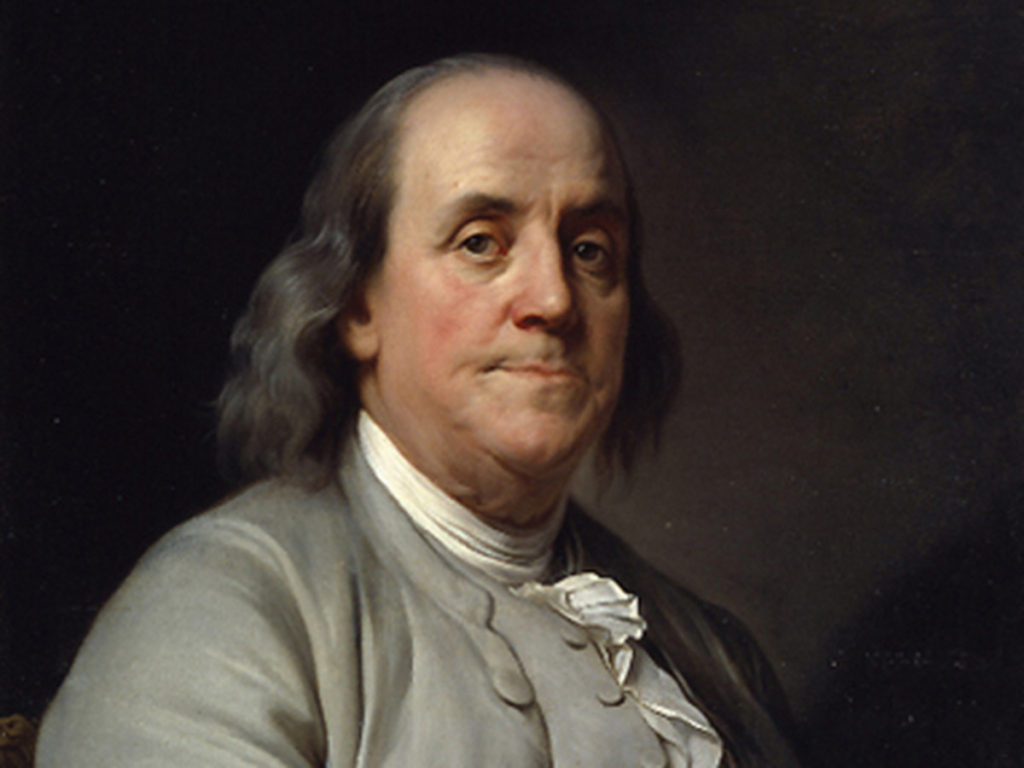January 17 is Ben Franklin’s birthday – devote the day to Ben! (Though Ben Franklin is interesting at just about any time.)
Table of Contents
ALL ABOUT BEN
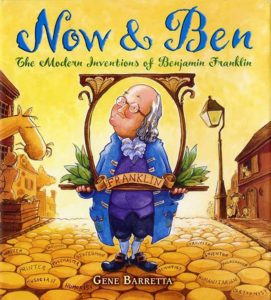 |
Gene Barretta’s Now & Ben: The Modern Inventions of Benjamin Franklin (Square Fish, 2008) is a picture-book account of the many Franklin inventions and innovations that are still with us today, a surprising collection that includes everything from bifocals to odometers and political cartoons. For ages 4-8. |
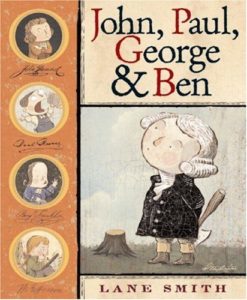 |
By the irresistible Lane Smith, John, Paul, George, and Ben (Disney-Hyperion, 2006) is the tongue-in-cheek picture-book story of four lads: John (Hancock), Paul (Revere), George (Washington), and Ben (Franklin). Just to keep the story straight, there’s a helpful True/False section at the back of the book. For ages 5-8. |
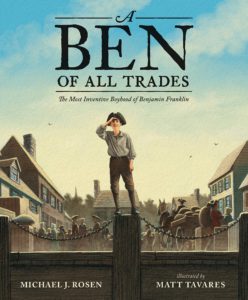 |
Not sure what you want to be when you grow up? You’re in good company. Michael Rosen’s A Ben of All Trades (Candlewick, 2020), with wonderful illustrations by Matt Tavares, is a picture-book biography of the inventive young Ben Franklin, who experimented with many trades – while all the time preferring to read, swim, and fly his kite. For ages 5-9. |
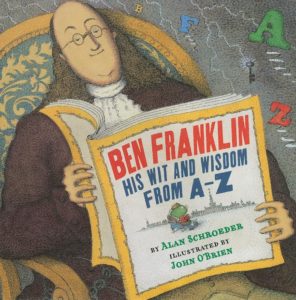 |
Alan Schroeder’s Ben Franklin: His Wit and Wisdom from A to Z (Holiday House, 2011) is an unusual alphabet book of Franklin’s life and accomplishments. A, for example, is for Almanac, Abiah (Franklin’s mother), Apprentice, and Armonica (a Franklin-invented musical instrument); N is for Newspaper, Navigation, and Nude (Franklin liked to take “air baths”). Absorbing for ages 7-9. |
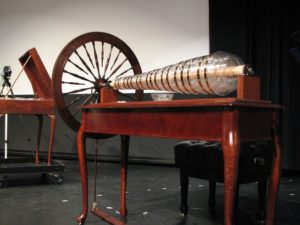 |
See Franklin’s glass armonica and explore many other Franklin topics at the Franklin Institute website. |
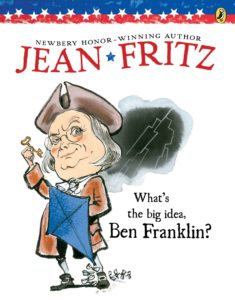 |
Jean Fritz’s What’s the Big Idea, Ben Franklin? (Scott Foresman, 1996) is a delightfully written and well-researched biography, packed with unusual details and human interest. For example: “In 1706 Boston was so new that its streets were still being named. For 5 years the town officials had been thinking up names and they hadn’t finished yet. So far they had Cow Lane, Flownder Lane, Turn Again Alley, Half-Square Court, Pond Street, Sliding Alley, Milk Street, and many others. Luckily Milk Street had been named early, because that’s where Benjamin Franklin was born. So right away he had an address.” For ages 7-10. |
| There are several more equally excellent American history books by Fritz in this same format, among them And Then What Happened, Paul Revere?, Can’t You Make Them Behave, King George?, and Will You Sign Here, John Hancock? | |
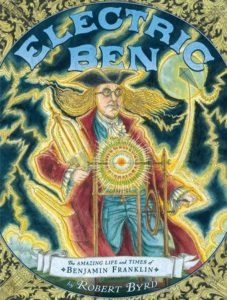 |
Robert Byrd’s cleverly designed Electric Ben (Dial, 2012) – filled with quote boxes, captions, and colorful, detailed illustrations – is a comprehensive 40-page biography for ages 7-10. |
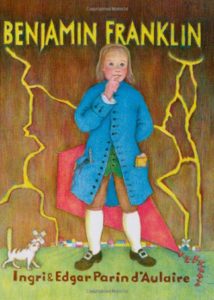 |
By Ingri and Edgar Parin D’Aulaire, Benjamin Franklin (Beautiful Feet Books, 1998) is a gorgeously illustrated picture-book biography for ages 7-10. |
| |
Robert Lawson’s Ben and Me (Little, Brown Books for Young Readers, 1988), subtitled “An Astonishing Life of Benjamin Franklin by His Good Mouse Amos,” is a clever and hilarious biography of Ben through the eyes of his pet mouse – who, as it turns out, was the brains behind many of Franklin’s landmark inventions. If you like this one, also see Lawson’s Mr. Revere and I (“Being an Account of certain Episodes in the Career of Paul Revere, Esq., as Revealed by his Horse”). For ages 7-12. |
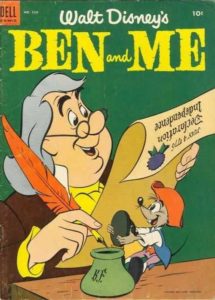 |
See the Disney cartoon version of Ben and Me on YouTube. |
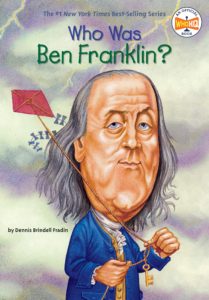 |
Dennis Brindell Fradin’s Who Was Ben Franklin? (Grosset & Dunlap, 2002) is a atraightforward 112-page chapter biography of Franklin, illustrated with black-and-white drawings and diagrams. (Among these, for example: a Leyden jar, with the parts labeled, and an illustrated account of the candle-making process.) For ages 8-11. |
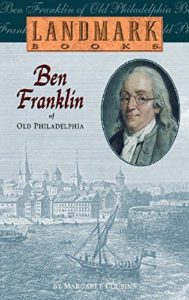 |
The Landmark Books series is an extensive collection of excellent histories, written in the 1950s and 60s by award-winning authors. Among these is Margaret Cousins’s Ben Franklin of Old Philadelphia (Random House, 2004). A good pick for ages 9 and up. |
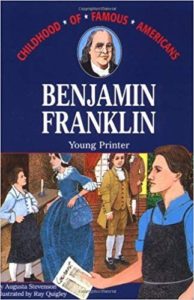 |
Augusta Stevenson’s Benjamin Franklin: Young Printer (Aladdin, 1986) in the (large) Childhood of Famous Americans series is a chapter biography covering Franklin’s early years. (“A long time ago, away up in New England in the little city of Boston there was a certain blue ball. It was about the size of a cocoanut, and it hung above the front door of a certain little house. On this blue ball was a name – Josiah Franklin.”) For ages 8-11. |
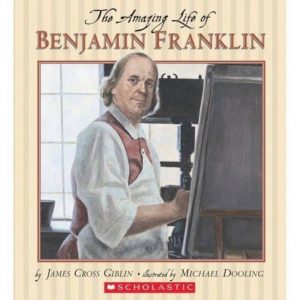 |
James Cross Giblin’s The Amazing Life of Benjamin Franklin (Scholastic, 2006) is an appealing 48-page biography of Franklin illustrated with wonderful realistic paintings by Michael Dooling. For ages 8-12. |
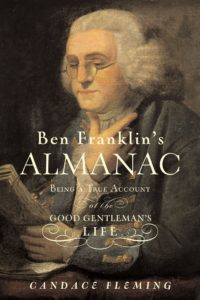 |
Candace Fleming’s creative Ben Franklin’s Almanac (Atheneum Books, 2003) is a catchy compendium of Frankliniana beginning with “A Year-by-Year Look at Ben’s Life.” Subsequent chapters – filled with anecdotes, quotations, capsule biographies, background information, and period illustrations – include “Boyhood Memories,” “The Writer’s Journal,” “The Scientist’s Scrapbook,” and “Revolutionary Memorabilia.” For ages 10 and up. |
| See a varied lesson plan based on Poor Richard’s Almanack for grades 3-8. Kids discuss Franklin’s proverbs and invent some of their own. | |
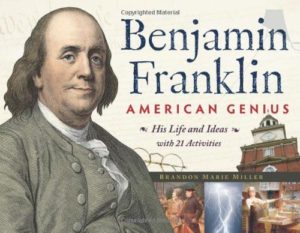 |
Brandon Marie Miller’s Benjamin Franklin, American Genius (Chicago Review Press, 2009) is a chronological account of Franklin’s life, creatively illustrated with period prints and interesting fact boxes. Included are 21 hands-on activities, among them dipping candles, making rock-crystal candy and hasty pudding, making a leather apron and a pair of shoe buckles, making a barometer and a walking stick, and designing a turkey seal for the United States. For ages 9-12. |
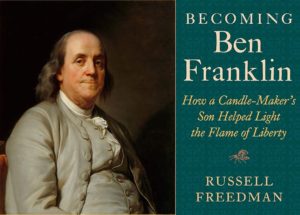 |
By Newbery-winning author Russell Freedman, Becoming Benjamin Franklin: How a Candle-Maker’s Son Helped Light the Flame of Liberty (Holiday House, 2013) is a chronological biography illustrated with paintings, period prints, and documents. For ages 11 and up. |
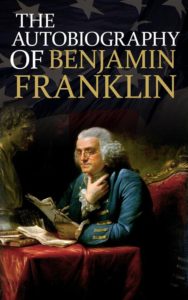 |
The Autobiography of Benjamin Franklin, written by Franklin in four parts between 1771 and 1790, was originally intended for his son William. Now considered the greatest autobiography produced in colonial America, it is available in many editions, including (for free) from Kindle and online at Project Gutenberg. |
